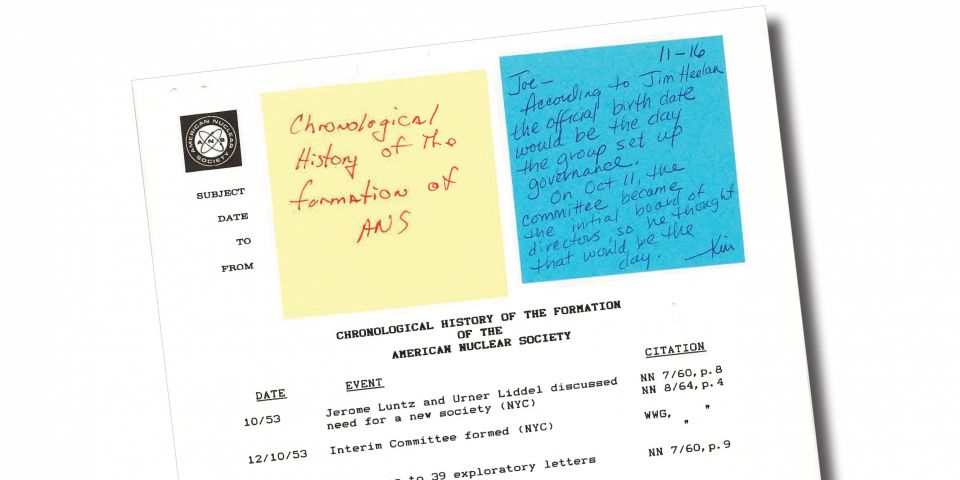Woke nuclear?

DISCLAIMER: The views expressed in posted articles do not necessarily reflect the views of the American Nuclear Society. The views expressed here are those of the individual authors. ANS takes no ownership of their views. The American Nuclear Society assumes no responsibility or liability for any use or operation of any methods, products, instructions, or ideas contained on this site.
After decades of relinquishing its value and return on investment as “emission-free” electricity generation, segments of the nuclear industry are pursuing actions in several states to secure emission credits for avoiding greenhouse gas emissions. To harmonize electricity market stability and greenhouse gas emission reduction goals, states such as New York and New Jersey have enacted programs to award zero emission credits (ZECs) to nuclear plants for their emission-free output.
Dearly earned and too long forgone, air emission credits have been the economic birthright of the nuclear industry since the passage of the 1990 Clean Air Act (CAA) amendments, when emission control capability first became a tradable commodity. Yet it took until 2016 for ratepayers and shareholders to receive even a small fraction of this valuable return on investment.
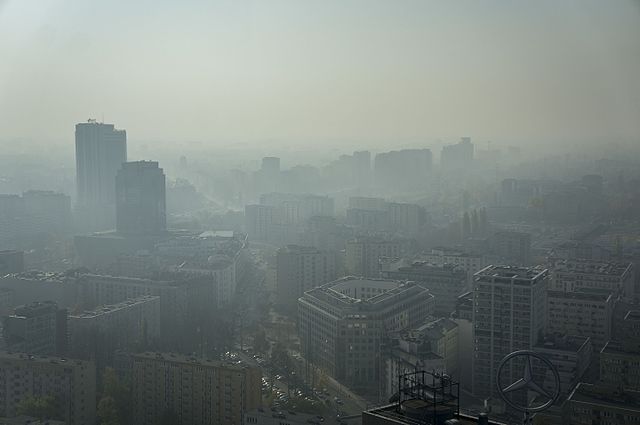
A city heavy with air pollution. (Photo: Radek Kolakowski)
Nuclear’s emission control value actually more accurately dates to 1957, when the first civilian production plant came on line, and this past exclusion of nuclear from credit markets has mislead decision makers for decades. Factoring nuclear out of emission credit markets over the last three decades has proved costly for the entire fission industry. As a policy director at the Nuclear Energy Institute (NEI), I first developed emission avoidance calculations in 1997; the new data sets confirmed nuclear’s role in eliminating both criteria pollutants under the CAA and greenhouse gases then the subject of planned international controls under the Kyoto Protocol.[1] The calculations also identified what were then hundreds of millions of dollars in emission credit value that had never been booked or realized by plant owners and operators on behalf of shareholders. Twenty years on, the forgone return on investment value has only multiplied.
At the time avoided emissions were first identified, the electric utility industry was coping with competitive restructuring. Any economic wokeness from emission control was considered secondary to securing the multimillions in stranded cost recovery that would ultimately compensate utilities for lost customers as many states forced territorial monopolies to absorb market competition. Further changes in electricity market design, coupled with the end of stranded cost payouts, has circled the industry back to a major component of its raison d’être—and a significant economic return that often means the difference between profitability and closure.
Although this economic value had accrued from the industry’s inception, the nuclear energy enterprise system instead steered nuclear’s clean characteristics onto the public relations platform. Industry experts have gone so far as to dismiss economic return for controlling emissions as “disingenuous [because] none of the 400 or so nuclear reactors around the world were built to abate carbon. They were built for other reasons such as energy security and economics.”[2]
Calling a claim to validly earned emission credits “disingenuous” speaks to an energy policy viewpoint that is unsurprisingly held by many opponents of fission electricity, but strikes a more startling chord in its popularity among supporters. The vaunted engineering capability manifested in nuclear plants, along with plants’ contribution to reliable electricity supply and job creation, formed the mainstay of economic arguments, especially as the high capital costs of a fission plant required meaningful justification by those financing and building them. The fact that nuclear plants don’t discharge major pollutants, such as sulfur dioxide, particulates, and nitrogen oxides, or the greenhouse gases of equal concern today has generally been viewed by suppliers and operators as a fortunate quirk of their fuel and technology. Few—if any—viewed it as a core competency of the design basis or an efficient capital expenditure (CAPEX) of scarce operational natural assets that warranted market share expansion or higher price validation. Relegating this primary purpose of nuclear plant buildout to a public relations sideline by industry insiders has played a significant role in denying nuclear plants the return on investment earned by the ratepayers and investors who shelled out extra dollars for green technology well ahead of the green curve.
History shows unequivocally that the full spectrum of emission control from sulfur to carbon and everything in between was a primary reason why these plants were built. As both shareholders and stakeholders face the prospect of premature plant closure unless valid economic return for airshed use avoidance is obtained, it is worth recounting the clean air mission given to the commercial nuclear power industry at its inception and keeping it front and center in today’s policy debates.
The dead at Donora
By the end of World War II, Pittsburgh, Pa., had lived with a thick haze of smoke and smog for almost a century. Steel mills, ironworks, power plants, and numerous other factories continually discharged acrid soot into its airshed. When the winds died down, smoke inundated the city and obscured the sunlight. Streetlights burned most of the day. A popular description was “hell with the lid off.”
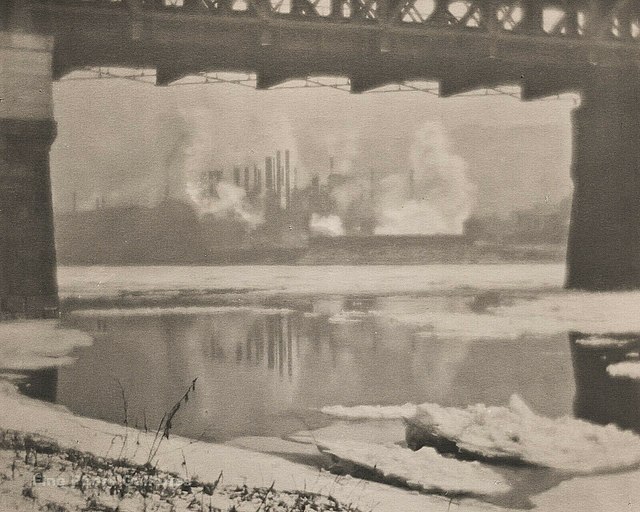
A view of old, industrial Pittsburgh. (Photo: Holmes I. Mettee)
Then, in 1948, twenty-four miles away in another Pennsylvania town of mills and rail yards named Donora, an upper atmospheric layer of cold air caused an air inversion, trapping a similar mix of lethal industry smoke that killed 20 and sickened 7,000 out of a population of 14,000. The deadly incident brought air pollution regulation into the legislative consciousness, and in 1949, the state of Pennsylvania established the Division of Air Pollution Control to target smog in Pittsburgh and other affected areas. The federal government conducted inquiries into Donora as well, and state legislation was followed in 1955 by the first national clean air law, the Air Pollution Control Act. Britain, reeling from its own Killer Fog in 1952 that took the lives of 12,000 Londoners, passed its seminal air quality law in 1956. The quest for clean air was on, and less than a decade after the deaths at Donora, the policy and economic arcs of Atoms for Peace and clean air converged among those same western Pennsylvania industrial enclaves in a town called Shippingport.
It was there that the Duquesne Light Company, a local Pittsburgh utility, successfully bid $5 million to partner with the Atomic Energy Commission (AEC) in what was to be the first commercial nuclear plant project. In his 1981 article “A Demonstration at Shippingport,” noted historian Richard Rhodes recounted Philip A. Fleger, chairman of the Duquesne board of directors, describing the company’s motivation for the investment. “The basic reason Duquesne went nuclear, he says, was pollution control.”[3] Rhodes’s article goes on to describe the public resistance and new regulatory reality for utilities in the wake of Donora’s dead, which affected Duquesne’s decision to support a clean nuclear option to satisfy growing demand:
Pittsburgh, once the “Smoky City,” had begun urban redevelopment in the late 1940s, instituting strict smoke control. By the time the AEC solicited bids from private industry for the [pressurized water reactor] project, sulfur oxide controls were also in the offing in the Pittsburgh area, well ahead of the rest of the nation. Duquesne was petitioning to build a coal-fired power plant on the Allegheny River, and citizens of the area were resisting. “We encountered a great deal of harassment and delay from objectors,” Fleger told me recently. “It began to look as if we wouldn’t be able to complete the plant in time to meet the power demands we were facing.”
The Atomic Energy Commission’s PWR project came along and it looked like a godsend: no expensive precipitators for smoke control, no expensive scrubbers for sulfur oxide control, 60,000 kilowatts of peak-load power, and a leg up on nuclear power technology.[4]
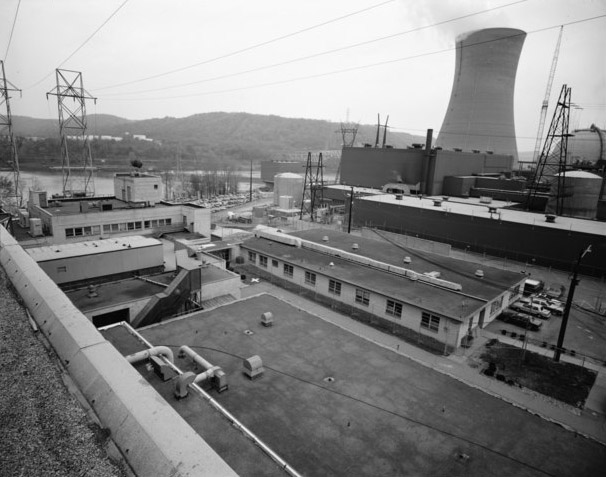
Shippingport nuclear power plant.
In his book Lights Out! Ten Myths About (and Real Solutions to) America's Energy Crisis, former senator and energy secretary Spencer Abraham reiterates pollution control as a primary factor in the development of Shippingport. “Given the desire to reduce air pollution derived from coal emissions, it was no accident that the first site chosen was Shippingport, Pennsylvania, ninety miles north west of Donora on the banks of the Ohio River.”[5] By the time this first U.S. commercial nuclear plant was operational, air pollution control was already a primary factor in funding, siting, constructing, operating, and the ultimate value of power plants.
During this same timeframe, New York City was also experiencing the toll of air pollution; a weather inversion there killed between 170 and 260 people in November 1953; ten years later, similarly trapped urban smog killed 200. In yet another inversion in 1966, 169 people died. These and other grim episodes led to the first national pollution control law, the CAA of 1963, updated in 1965, 1966, 1967, 1969, and significantly in 1970, when watershed amendments were passed authorizing new federal and state regulations to enforceably limit emissions.
As 1950s- and ’60s-era airshed loading controls spread from Pennsylvania to comparably affected areas, the map of follow-on nuclear power plant installations tracked the most serious smoke- and smog-afflicted locales. Confirming the emission control context for nuclear’s early adoption into the New York City metropolitan area with the August 1962 opening of Indian Point-1, Abraham notes, “The plant would allow [New York utility] Con Edison to retire some of its oldest coal-fired plants.”[6]
So too Los Angeles—by 1943, overwhelming smog led residents to suspect a Japanese chemical attack might have occurred. As California cracked down on smog and smoke in the 1950s and ’60s, San Onofre-1 was constructed and in operation by 1968. According to Energy Information Agency data, between the enactment of the first federal statute controlling air emissions in 1963 and the major CAA revision in 1970, 52,500 MW of nuclear generation were ordered.[7] The atomic and clean air ages had become inseparable.
Woke science?
If Philip Fleger had seemed a lone voice in 1957, he became part of a large chorus over the next decade. The travails of smoky cities around the nation wafted through to the AEC as early as 1962. That year’s AEC report to President Kennedy on a “new and hard look” at nuclear’s role in the economy listed several compelling reasons to further nuclear energy, starting with a boost to the “health and vigor” of the industrial economy. Additional benefits included crossover uses such as desalination, a competitive stimulus to conventional energy production, preservation of world leadership, and a positive bearing on the defense posture. Lastly, the report cited the further advantage that nuclear does not contribute to “the increasing smoke pollution of the atmosphere as the use of coal increases.”[8]
By 1968, medical and scientific experts had firmly established the links between power production and air pollution, prompting a Joint House-Senate Colloquium in July of that year between the Senate Interior and Insular Affairs and the House Science and Aeronautics Committees to survey policies for environmental management.[9] Nuclear energy expansion was among them.
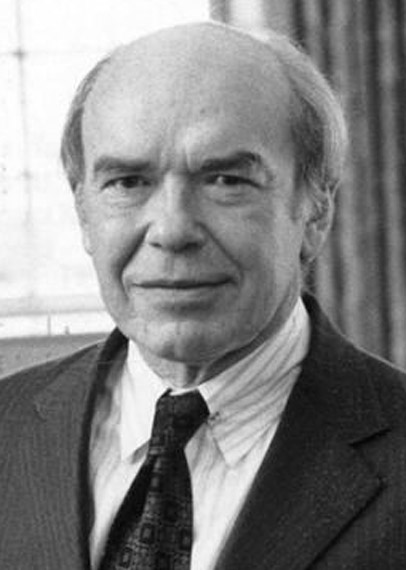
Donald Hornig
As part of that colloquium, Dr. Donald Hornig, director of the president’s Office of Science and Technology, testified to emerging concerns about global warming: “We can say right now that it looks, you know, as if the carbon dioxide content of the atmosphere is going to rise 25 percent by the year 2000 if we keep burning coal and oil at the present rate.” Addressing this “atmospheric blanketing,” Hornig noted that “if it were one day necessary to cease the burning of fossil fuels, maybe in 2100—I don’t think we will have to face that problem but it is conceivable that it could arise—then the critical thing would become the availability of other forms of energy such as atomic or nuclear energy.”[10]
During Joint Committee on Atomic Energy hearings on the Environmental Effects of Producing Electric Power, begun in October 1969, control requirements for radioactive gaseous and liquid effluents from nuclear plants had not changed expert views that nuclear deployment was necessary for reversing upward trends in already-serious air emissions. Edward P. Radford, MD, professor of environmental medicine at the Johns Hopkins University School of Medicine and Hygiene, testified on the now-established pollution avoidance goals for pursuing nuclear energy:
I am convinced, as are the Atomic Energy Commissioners and many other people, that we must develop nuclear power, and preferably as soon as it is practicable to do so with large scale development of breeder reactors. The question of whether power produced by nuclear plants is more or less expensive than that produced by other kinds of electric power plants, is not, in my opinion, a prime issue so far as long-range national planning is concerned. That is, the reason for developing nuclear power should not be solely because electric power will be cheaper by this means. There is very little evidence for such a statement in my opinion, and I do not consider it very important anyway, in comparison with such issues as conservation of hydrocarbons for other purposes. Much more important is that every effort must be made to protect the environment from potentially hazardous wastes from all sources, and I include those from coal-burning and other fossil-fuel plants, which currently are emitting unacceptable amounts of air pollutants. Economic costs of achieving this goal must become accepted as part of general policy.[11]
In the midst of calls for regulatory enhancements on thermal and radioactive releases, the role nuclear could have played in what he termed the “crisis between pollution and power” was prophesied by none other than Senator Albert Gore Sr.:
Fossil fuels give off contamination as well as nuclear fuels. As you know, the overwhelming proportion of generation plants for the future is planned to be nuclear. It is the more economic fuel and if we have proper generation reactors it promises to be the safest and the cleanest.[12]
Woke markets?
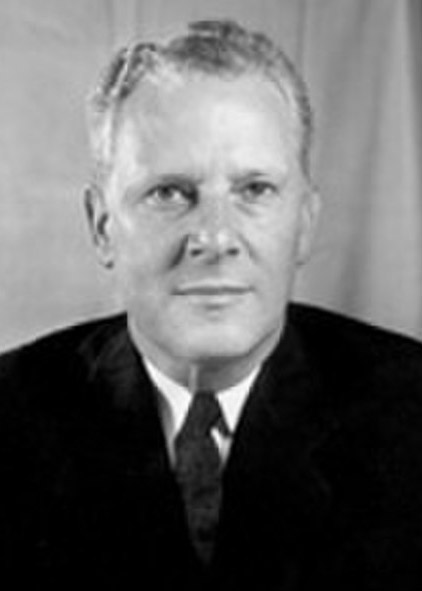
Al Gore Sr.
Senator Gore may have been right about safe and clean nuclear at the time, but energy efficiency and the Three Mile Island accident significantly altered his estimates of future electricity generation proportions. By the mid-1980s, previously planned nuclear buildout had waned, but economic and ecologic damage from acid rain was prompting both chambers of Congress to hold hearings on sulfur dioxide and nitrogen oxide emission controls for fossil plants that were even stricter than those in the 1970 law.
What would become the Acid Rain Program in the 1990 CAA amendments was still being debated on cost and efficacy grounds in the decade prior to passage. Utilities relying primarily on coal—many in the Midwest—resisted acid rain emission controls on interactive economic grounds; emission controls on fossil fuels raised operating costs, which in turn raised customer rates, which in turn erased a region’s competitive energy and economic advantage over areas that spent more to have cleaner generating capacity.
Nuclear’s major emission control contributions emerged again in the 1984 House Energy and Commerce Subcommittee hearings on additional acid rain controls. Representatives of the Tennessee Valley Authority (TVA) testified that complying with new acid rain emission controls would only raise customer rates by 9 percent, while Indiana utility Indianapolis Power and Light (IPL) estimated much higher increases of 25 percent to 35 percent.[13] Committee members requested that TVA submit information for the record explaining its lower compliance cost estimates for upgrading its fossil plants to meet additive acid rain controls. Testimony provided by both IPL and TVA confirmed the utility industry’s clear comprehension that deployment of nuclear generation acted as emission control technology, with TVA adding explicit evidence to the record that nuclear “displaced” emitting generation:
- A part of the TVA sulfur dioxide emission reduction was not actually a reduction in emission rates, rather the replacement of fossil-fired generation with nuclear. TVA placed in service 2440 MW of non-sulfur dioxide–emitting nuclear capacity. This baseloaded nuclear capacity displaced a significant amount of TVA coal-fired generation with no addition to TVA's sulfur dioxide emission reduction costs.
- In 1982, TVA had 45 percent non-sulfur dioxide–emitting nuclear and hydro generating capacity. Since the nuclear plants are the newest, an even larger portion of TVA's rate base represents non-coal-fired capacity. Hence, TVA was able to spread the sulfur dioxide reduction costs over a much greater rate base with the resultant lower rate increase due to the sulfur dioxide emission reductions.[14]
For TVA, and other utilities where emission “displacement” resulted from fuel diversification with uranium, nuclear plants provided a means to both offset and redistribute the costs of complying with emission controls incurred for coal-fired plants.[a] For utilities that remained coal-only and retained financial and operating models that depended on liberal access to airshed capacity to dispose of combustion byproducts, the cost “spread” described by TVA was decried as “dilution” that gave an unfair advantage.[15]
Although nuclear’s economic value and contribution to emission control were again recorded in the 1980s-era policy debate, rate-base accounting didn’t track the realities described in testimony. Utility bookkeeping circa 1984 accrued and applied nuclear’s emission control value not as economic return from the nuclear plant investment but essentially as the cost dilution and savings to coal plant operations as described by the testimony. Ultimately, TVA’s positive experience with emission displacement and rate-base cost dilution was replicated in the new “market-based” trading approach used to implement stricter acid rain emission standards under the 1990 CAA amendments, but not to nuclear utility advantage in the least. In fact, quite the opposite occurred.
Before the Acid Rain “Cap and Trade” Program was implemented, nuclear’s non-emitting displacement and dilution savings provided return on investment to the service territory ratepayers underwriting this diversification/emission control twofer, as the TVA testimony confirmed. In other words, TVA ratepayers carried the cost of the nuclear plant, and the value generated (reliability, emission control) was applied internally to reduce the cost of fossil fuel generation and thereby reduce the rates paid by TVA customers. After the 1990 CAA amendments, the value of any and all ratepayer-supported TVA nuclear plants was effectively made community property and redistributed among the 250 active coal-fired units at 105 plants in the 21 states included in the program. This was the same for all the other utility nuclear plants geographically operating in the affected states.
Effectively, the cap-and-trade markets overzoned utility territories and erased previous emission control accounting boundaries. This new multistate pooling arrangement redistributed the displacement and dilution value of nuclear and hydro among all the operating plants in the region; this ultimately reduced the cost of compliance even for utilities like an IPL that had stuck with coal. Put another way, when applied intra utility through the rate base, emission control value from nuclear expenditures mass-balanced across the utility’s territory, and the savings accrued back to the shareholders and ratepayers footing the clean nuclear bills. Applied intra regionally, however, the offset and dilution value earned by nuclear investors were now distributed outside their service territories to utilities still burning coal and loading up the airshed. In particular, New England, New York, and New Jersey ratepayers, already bearing some of the highest electricity costs in the nation, ironically shared the returns on their historic investment in clean generation and emission displacement with the very coal plants in Ohio and Indiana thought to be causing the acid rain that was destroying their forests and lakes.
When the electricity industry restructured to competitive markets in the late 1990s, high natural gas prices and stranded cost reimbursements provided profits that temporarily obviated any need for nuclear to accrue earned emission control value. In the early restructured years, no-emission fission plants could generously afford to continue dispensing billions in emission control credit to its fossil fuel cousins, effectively subsidizing continued coal generation as airshed carrying capacity supplies constricted. Enter fracking, the black swan of fuel pricing that no one saw coming. Affordable natural gas radically altered the marketscape, and now twenty-three Conferences of the Parties on Climate Change, dozens of emission and hidden value reports, and multiple prodigal conversions by recovering environmentalists later, new age drilling techniques and the end of post-deregulation payouts have finally sent merchant nuclear plants jockeying for seats at the emission credit table, seeking what is, at this somewhat late date, dismissed as yet another subsidy to nuclear.
Woke shareholders?

Shareholders at a meeting.
According to NEI, a 16.4 percent increase in nuclear generation from 1990 to 1995 in 21 states avoided 480,000 tons of sulfur dioxide, or 37 percent of the 1990 CAA amendments reduction requirement.[16] Noting that “no credit was allocated to nuclear plants,” NEI estimated the “contribution” to emission control would have been worth about $50 million, but that’s really only a fraction of the cumulative value. Actual emission credit value accruing to shareholders and ratepayers since the 1960s spans multiple emission categories and regions. Besides historic sulfur prevention, the avoided emission value of nitrogen oxide and particulate matter in heavily controlled areas like California and the Ozone Transport Region are more likely billions even before greenhouse gases are included. For example, the South Coast Air Quality Management District (SCAQMD), which regulates greater Los Angeles, is a few miles up the road from the shuttered San Onofre nuclear power plant. At SCAQMD, emission reduction credits for nitrogen oxide fetched $398,000 per ton in 2009, and sulfur dioxide topped out at $434,000 per ton. Although subject to market fluctuations, emissions avoided from operating San Onofre alone could have been worth as much as $300 million in any given year, had the plant’s contributions to clean air been recognized in those emission credit markets.
Nuclear produces even more uncompensated economic value in the health maintenance category. TVA again provides useful illustrative figures. In 2011, the multistate utility settled alleged CAA violations at 11 of its coal-fired plants in Alabama, Kentucky, and Tennessee, agreeing to an estimated $3 to $5 billion in new spending for state-of-the-art pollution controls on those facilities.[17] That investment was intended to net a minimum of 115,977 tons per year in nitrogen oxide, and 225,757 tons per year of sulfur dioxide.[18] As justification for the forced spending, the Environmental Protection Agency models valued this investment in coal plant emission control at $27 billion in annual health benefit return, including 1,200 to 3,000 premature deaths, 2,000 heart attacks, and 21,000 asthma attacks prevented each year.
The emission levels controlled by the annual operations of the U.S. nuclear fleet are orders of magnitude higher than the emissions avoided by TVA’s scrubbers. Applying these same EPA models would show the investment in pollution control from nuclear deployment has reaped untold lives saved and hundreds of billions—even trillions—of dollars in these selfsame health benefits. Yet none of this return has been calculated or booked to assure full shareholder value for plant owners or the companies that supply and support the industry overall.[b]
Market realities no longer allow for debates on disingenuousness as green nuclear technology investors and sustainers find themselves mortally disadvantaged in electricity markets whose current design, by intent or default, grant tax breaks and dispatch preferences to competing generation while refusing to allow nuclear to recover the full value of its reliability and emission control. The few states granting ZECs are finally enabling nuclear plants to realize some portion of the emission control value produced over the six decades since Shippingport first came on line. Faced with a make-or-break point 20 years after the first comprehensive data and information on nuclear’s success as pollution control technology was compiled, no-emission fission plants are at last lining up to obtain the airshed efficiency credits they should have been getting for decades—and staving off closure in the process.
While state-by-state ZEC programs are positive steps, they have yet to equalize the value of a proverbial ounce of greenhouse gas prevention with pounds of sequester cure provided to fossil fuel technology. New York’s early adoption of ZECs uses complex formulas based the social costs of carbon that price credits at $17 per megawatt hour at four upstate nuclear units. The overall estimate of $480 million per year in ZEC payments to the James A. Fitzpatrick, R.E. Ginna, and Nine Mile Point Units 1 and 2 plants that annually avoid 15 million tons of greenhouse gases yields $31 per ton controlled under a straight credit pricing basis.[19] In contrast, the Bipartisan Budget Act of 2018 extends and enhances tax credits to coal, natural gas, and oil companies that can capture or reuse their carbon dioxide releases. This expanded 45Q Program will give a credit of $50 per ton to fossil fuel enterprises for burying post-production carbon dioxide and ramp up reutilization credits to $35. Businesses have 12 years to take advantage of the credits and no limit would exist on the amount of buried or reused carbon dioxide eligible for the credit. So although ZECs are just barely leveling the playing field in individual states, if priced at $50 per ton in all markets, the 554 million metric tons of carbon dioxide U.S. nuclear plants neither bury nor reutilize but simply never create to begin with were worth $27.7 billion in 2016 alone.
Woke sustainability?
Beyond the internal workings of the nuclear industry itself, misaligned economics and denied shareholder and ratepayer return on investment harms both customers currently dependent on baseload green kilowattage and those in future need of it. More than half the world’s population now lives in cities where critical requirements for clean water, hospitals, schools, streetlights, and sanitation (among other life-preserving systems) demand reliable baseload power that does not overload or degrade already scarce natural capital supplies. As economic development around the world continues its evolution from an industrial to the information age, blockchains and electric vehicles will join the communication and commerce revolutions demanding 24/7/365 power on top of critical survival systems. This “electronic” economic growth will increase the need for volume-assured, green electrons that minimize use of scarce planet and maximize output of critical power. Securing validly earned emission credits enables baseload nuclear generation to continue assuring the basic survival, upward mobility, and economic growth that increasingly depends on electricity as a primary energy source.
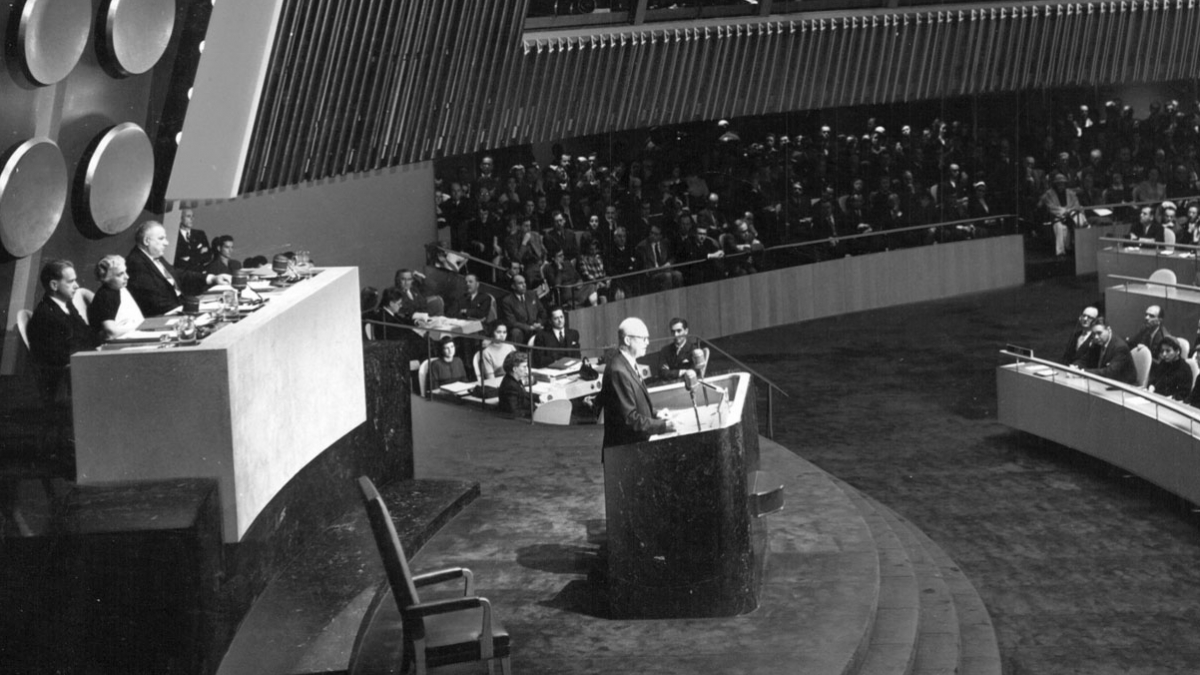
Eisenhower and his Atoms for Peace speech.
In 1953, when President Dwight Eisenhower first proposed the pooling and allocation of fissionable materials by an International Atomic Energy Commission “to serve the peaceful pursuits of mankind,” he specifically identified “abundant energy in the power-starved areas of the world” as a special purpose of such a program.[20] As described by the curators of his library in Abilene, Kan., “President Dwight D. Eisenhower was determined to solve ‘the fearful atomic dilemma’ by finding some way by which ‘the miraculous inventiveness of man’ would not be dedicated to his death, but consecrated to his life.”[21]
But just as the discovery of silver did not cause gold miners to abandon the Comstock Lode, the lack of mention of emission control in the original “Atoms for Peace” declaration did not permanently bar additional value platforms or preclude heretofore unrealized return on investment when determining the long-term economic value of civilian nuclear energy. International leadership, abundant reliable power, national security, scientific research and breakthroughs, and sustaining U.S. technological prowess and superiority were all key reasons for advocating nuclear in its early days—and were all more compelling to nuclear engineers and advocates than balancing out emission loading from coal plants. No-emission fission was not exactly a prestige nuclear policy platform in the immediate postwar zeitgeist. Forged in the aftermath of the death at Donora, multiplied by the air pollution crises across major American cities, and compounded by the emergence of global warming in the late 1960s through today, nuclear’s natural capital efficiency has finally crossed into the economic policy arena that can positively affect sustainable development. Atoms for Peace have always been Atoms for Sustainability, but the realization is coming somewhat late.
Meanwhile, deaths like those in Donora keep occurring worldwide as the global airshed strains to safely absorb growing volumes of industrial and commercial residuals and waste. The World Health Organization estimates three million deaths still occur each year due to outdoor air pollution exposure, and 92 percent of the world’s population breathe air whose quality fails to meet basic health guidelines. Many of these regions lack the expertise and legal structure for nuclear development, forcing energy production growth to default to more polluting alternatives.

Oscar Wilde (Photo: Napoleon Sarony)
Oscar Wilde defined a cynic as one “who knows the price of everything, and the value of nothing”; like any other major enterprise, the nuclear industry has its fair share of cynics. In today’s world, however, it’s ironic and near perilous that the most natural capital–efficient industries (and therefore the more accurately “green”) like subways, high-speed rail, or baseload nuclear electricity are repeatedly mischaracterized as uneconomic due to high financial capital outlays. The market realities of today’s deficit natural capital supplies now make minimized air, land, and water use the primary indicator of enterprise economy. Derivative calculations like social cost of carbon notwithstanding, the full economic value of using far less air, land, and water capacity per unit of production is still not effectively factored into operational requirements of identification, production costing, or material risk calculations, making price an inadequate indicator of value for scaled green enterprise.
If a technology’s own normative concepts of value eschew historical evidence, put technological gratification ahead of operational purpose, and propagate barriers to economic return such as misrepresented ingenuousness, the criticism—and value loss—cannot be a total surprise. For an industry long plated in gold, verdigris remains a resisted patina in the nuclear enterprise system. By finally seeking some small amount of its earned air emission credits, industry insiders are belatedly securing valid return on investment to which their shareholders and paying customers have been entitled for decades, but it remains to be seen if belated woke can stave off broke.
Maureen T. Koetz, Esq. is a former acting assistant secretary of the Air Force and the US Senate Counsel, and is current sustainability consultant with Planet A* Strategies, specializing in recovering sustainability value for defense, manufacturing, and municipal clients. She currently serves as an advisor to the United Coalition for Advanced Nuclear Power (UCAN).
------------------------------------[a] Nuclear displacement/dilution was having similar salutary effects on nitrogen oxide control costs as well. Studies commissioned at the NEI in the late 1990s showed nuclear deployment from 1975 to 1990 cut 59% of the Nitrogen oxide emissions during that period, compared with 41% of reductions from CAA compliance by emitting plants.
[b] The NEI has calculated the avoided emissions of the entire nuclear fleet as follows: sulfur dioxide, 1 million tons; Nitrogen oxide, 0.5 million tons; and carbon dioxide,0.5 billion tons. Although orders of magnitude higher than the emissions eliminated by the TVA settlement, the NEI indicates this vastly higher volume of emission control is only “valued at a social cost of $33B annually,” just $5 billion more than the TVA project alone (see http://www.ncsl.org/Portals/1/Documents/energy/mcgarey-present.pdf).
[1] Kyoto Protocol to the United Nations Framework Convention on Climate Change (FCCC), FCCC Convention of the Parties, 3rd Sess., UN Doc FCCC/CP/1997/L.7/Add.1, Dec. 10, 1997.
[2] Stephen Kidd, “Achieving progress in nuclear — throw out the establishment?” Nuclear Engineering International, January 29, 2017.
[3] Richard Rhodes, “A Demonstration at Shippingport,” American Heritage Magazine 32, no. 4 (1981), p. 5.
[4] Rhodes, “A Demonstration at Shippingport,” p. 5.
[5] Spencer Abraham and William Tucker, Lights Out! Ten Myths About (and Real Solutions to) America's Energy Crisis (2010), 63. Note: the distance from Donora to Shippingport is currently measured at 60 miles.
[6] Abraham and Tucker, Lights Out!, p. 63.
[7] “Today in Energy,” U.S. Energy Information Administration.
[8] US Atomic Energy Commission, Civilian Nuclear Power . . . A Report to the President—1962, p. 26.
[9] Joint House-Senate Colloquium to Discuss a National Policy for the Environment, Hearing before the Committee on Interior and Insular Affairs, United States Senate and the Committee on Science and Aeronautics, U.S. House of Representatives, 90th Congress, 2nd Sess., July 17, 1968.
[10] Joint House-Senate Colloquium, p. 51.
[11] Hearings before the Joint Committee on Atomic Energy, 91st Congress, 2nd Sess. on Environmental Effects of Producing Electric Power, Part 2, Vol.1, 1970, p. 1352.
[12] Hearings before the Joint Committee on Atomic Energy on Environmental Effects of Producing Electric Power, p. 1140.
[13] Hearings before the Subcommittee on Health and the Environment of the Committee on Energy and Commerce, House of Representatives, 98th Congress, 1st and 2nd Sess., on HR 3400: A bill to Amend the Clean Air Act to Control Certain Sources of Sulfur Dioxide and Nitrogen Oxides to Reduce Acid Deposition and for other purposes (1984), testimony of Robert McKnight, p. 614.
[14] Hearings before the Subcommittee on Health and the Environment of the Committee on Energy and Commerce, 1st and 2nd Sess., on HR 3400, p. 631.
[15] Hearings before the Subcommittee on Health and the Environment of the Committee on Energy and Commerce, 1st and 2nd Sess., on HR 3400, p. 623.
[16] Nuclear Energy Institute, “Statistics on Nuclear Energy in the US.”
[17] See EPA, “Tennessee Valley Authority Clean Air Act Settlement."
[18] EPA, “Tennessee Valley Authority Clean Air Act Settlement.”
[19] See “New York Electricity Supply Costs to Increase in 2017 – PSC Approves Clean Energy Standard, Subsidizes Upstate Nuclear Power,” Energywatch, August 3, 2016.
[20] Dwight D. Eisenhower, “Address Before the General Assembly of the United Nations on Peaceful Uses of Atomic Energy,” December 8, 1953.
[21] “Atoms for Peace,” Dwight D. Eisenhower Presidential Library, Museum, and Boyhood Home.



